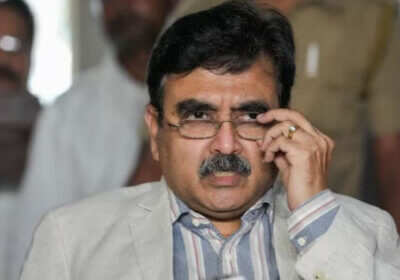The new parliament building’s construction contributions from Indian States and UTs: 10 Points
With various building materials sourced from India’s many regions, the brand-new Parliament Building will represent Indian culture.
PM inaugurated the new Parliament on May 28
The new Parliament building will be officially opened on Sunday, May 28, by Prime Minister Narendra Modi and Speaker of the Lok Sabha Om Birla. The ceremony will also include participation from some senior government ministers and Rajya Sabha Deputy Chairman Hariwansh.
Related Read | The Sengol was never designated as a “walking stick” or placed in Anand Bhawan
The brand-new Parliament Building will represent Indian culture
With different building materials sourced from India’s various regions, the brand-new Parliament Building will represent Indian culture. The sandstone used in the construction came from Samthura in Rajasthan, whereas the Ashoka Chakras inside each home came from Indore.
Here is a 10-point guide to materials found inside the new Parliament building:
1) Sarmathura, in Rajasthan, provided the sandstone for the new Parliament building.
2) The Kesharia green stone in the Lok Sabha chamber came from Udaipur, whereas the red granite in the Rajya Sabha chamber came from Lakha in Ajmer, and the white marble came from Ambaji.
3) The new Parliament’s furniture was made in Mumbai, while Nagpur was the source of the building’s teakwood.
4) Daman and Diu provided the steel for the false ceiling structure of the new Parliament Building, and Aurangabad and Jaipur provided the materials for the sculpture of the Ashoka Emblem.
5) The Ashoka Chakras that are installed inside the Lok Sabha and Rajya Sabha, as well as the exterior of the complex were purchased in Indore.
6) Rajasthan, Noida, and Uttar Pradesh were used as the sources for the latticework encircling the new Parliament.
7) The new building’s stone aggregates came from Kotputali, and the sculptors who did the carving work were from Udaipur’s Abu Road.
8) Fly ash bricks, brass work, pre-cast trenches, and the steel structures for the Lok Sabha and Rajya Sabha false ceilings came from the UT of Daman and Diu, while the M-sand was purchased from Chakari Dadri, Haryana.
9) The stone aggregate came from Kotputali in the Rajasthani district of Kotputali, and the stone carving work was acquired in Abu Road and Udaipur.
10) The newly built Parliamentary building, which will contribute to the further development of India’s illustrious democratic traditions and constitutional values, is also furnished with cutting-edge amenities that will enable the Members to carry out their duties more effectively.























Pingback: New Parliament Building : Modi Remembers Pandit Nehru's Quote And More